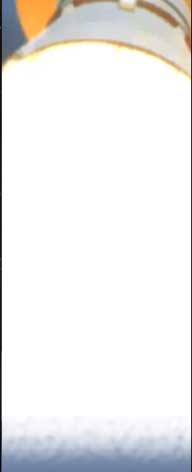|
 I was assigned to work in the Impact Testing Facility under my mentor, Mr. Andy Finchum. A total of four interns, myself included, conducted research relating to the effects of high-speed impacts on space-flight hardware. Using a device called the Exploding Wire Gun (EWG), we simulated supersonic and hypervelocity impact scenarios (i.e. micrometeorite impacts on lunar surface, precipitation on missile radome) in order to collect both qualitative and quantitative data relating to the impact. Our main objective for the summer was to characterize the gun using a Design of Experiments approach to create a performance curve for the operational range of the EWG. After gathering velocity measurements (as well as quantitative observation) of the impacts, we input the data into a computer generated test matrix for characterization analysis. Proper characterization of the EWG would enable future researchers to obtain a specific impact velocity given a set of user-defined parameters (i.e. projectile mass and diameter, burst disc thickness, etc…) which would allow for more efficient and reliable research.
To characterize a gun of such magnitude, proprietary instrumentation had to be developed which would allow us to gather accurate velocity measurements of projectiles traveling at such high speeds. Previous research with the gun had identified that high-speed video in conjunction with computer software could be used to capture the projectile and determine its average velocity. Unfortunately, at speeds in excess of 2 km/sec, the high-speed video barely captured a blur. The excitement began as our team started to develop new and creative ways to gather the supersonic/hypervelocity data along with the proper nomenclature to go along with the instruments: the Smanaganator and Vectorhozzel. Using a line of pressure transducers and an oscilloscope to record the shockwave off the front of the projectile (Vectorhozzel) and a laser/ beam splitter in combination with a set of fiber optic photodiodes (Smanaganator) we were able to both validate and analyze the data we gathered.
The research was a great experience that taught me more than I could have ever imagined. Working on a team with fellow engineering students to develop real-world application was not only educational, but fun. Moreover, the exposure to day-to-day engineering and the ability to “pick the brains” of many veteran engineers/scientists allowed me to leave Huntsville, AL, with an experience I could have received nowhere else on Earth.
I would recommend a Missouri Space Grant Consortium Internship to anyone. My summer internship at NASA – Marshall Space Flight Center proved to be an experience that I will never forget: on the job experience, hands-on research, teamwork, and a fun-filled summer with students from all over the country.
I was assigned to work in the Impact Testing Facility under my mentor, Mr. Andy Finchum. A total of four interns, myself included, conducted research relating to the effects of high-speed impacts on space-flight hardware. Using a device called the Exploding Wire Gun (EWG), we simulated supersonic and hypervelocity impact scenarios (i.e. micrometeorite impacts on lunar surface, precipitation on missile radome) in order to collect both qualitative and quantitative data relating to the impact. Our main objective for the summer was to characterize the gun using a Design of Experiments approach to create a performance curve for the operational range of the EWG. After gathering velocity measurements (as well as quantitative observation) of the impacts, we input the data into a computer generated test matrix for characterization analysis. Proper characterization of the EWG would enable future researchers to obtain a specific impact velocity given a set of user-defined parameters (i.e. projectile mass and diameter, burst disc thickness, etc…) which would allow for more efficient and reliable research.
To characterize a gun of such magnitude, proprietary instrumentation had to be developed which would allow us to gather accurate velocity measurements of projectiles traveling at such high speeds. Previous research with the gun had identified that high-speed video in conjunction with computer software could be used to capture the projectile and determine its average velocity. Unfortunately, at speeds in excess of 2 km/sec, the high-speed video barely captured a blur. The excitement began as our team started to develop new and creative ways to gather the supersonic/hypervelocity data along with the proper nomenclature to go along with the instruments: the Smanaganator and Vectorhozzel. Using a line of pressure transducers and an oscilloscope to record the shockwave off the front of the projectile (Vectorhozzel) and a laser/ beam splitter in combination with a set of fiber optic photodiodes (Smanaganator) we were able to both validate and analyze the data we gathered.
The research was a great experience that taught me more than I could have ever imagined. Working on a team with fellow engineering students to develop real-world application was not only educational, but fun. Moreover, the exposure to day-to-day engineering and the ability to “pick the brains” of many veteran engineers/scientists allowed me to leave Huntsville, AL, with an experience I could have received nowhere else on Earth.
I would recommend a Missouri Space Grant Consortium Internship to anyone. My summer internship at NASA – Marshall Space Flight Center proved to be an experience that I will never forget: on the job experience, hands-on research, teamwork, and a fun-filled summer with students from all over the country.
~BRADON SMITH, PARKS COLLEGE AT ST. LOUIS UNIVERSITY
|







